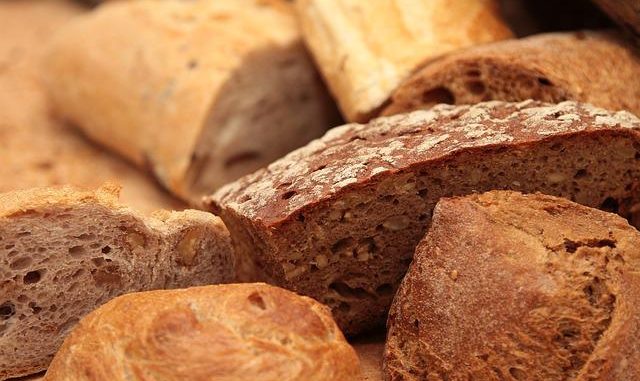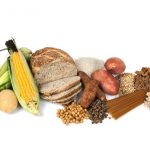
In 2018 we reported on the dietary fiber labelling laws that existed at that time. New dietary fiber labelling laws in the USA mean that changes to nutrition labelling and the way dietary fibre is defined must be considered.
We were aware though that life was going to change a couple of years later because of a desire to improve dietary fibre uptake but also amend the legislation with the appearance of better analytical methods. Consumption of fiber is poor in the Western world generally. Under-consumption, as it is often termed, is a major health issue in the USA so any efforts to improve the situation have been looked at and a more effective regulatory approach is the route chosen. It’s interesting to see now if the new labelling laws introduced in 2021 are helping with compliance and what the consequences are.
The Main Changes To The Dietary Fiber Regulations
The main changes relate to the daily value for dietary fibre which has gone up. Also, the FDA now has new definitions for dietary fiber and recognises a category of isolated and synthetic fibers in food which means analytical methods have also changed to some small degree. It then means that fiber is labelled differently now in the USA.
The new US FDA Dietary Fiber Regulations as they are titled came into force on the 1st July 2020. These are encapsulated in the Code of Federal Regulations as 21 CFR 101.9(c)(6)(i).
Under the old FDA rules, there were levels of fiber per serve for which you could make a claim. A daily value (DV) (100%) was 25 grams of fibre. To be a Good Source of dietary fibre which amounted to 10% of the daily value (DV), you needed to offer 2.5 grams per serve. To be an Excellent Source of fiber you had to offer in a serving, 20% of the DV which was 5.0 grams per serve.
The old FDA rules also covered calorie content. There should not be any energy associated with insoluble dietary fibre because it could not be metabolised and so it was a big fat zero i.e. 0 Cal/g. Soluble dietary fiber has a calorific value however and it is quoted at 4 Cal/g. It also means the maximum value for total dietary fibre is also 4 Cal/g and can never be higher.
The FDA’s New Rules are that the Daily Value (100%) is now 28 grams per day which is an increase of 3 grams per day. A consequence is that both the Good Source and Excellent Source values have risen to 2.8 grams and 5.6 grams per serving respectively. It means that products making claims of dietary fibre have to revise their labels if the amounts no longer meet the new higher levels. There are cases of health bars for example that were once able to claim they were Excellent Sources of fiber no longer being able to because the DV amount increased by 0.6 grams per serve (i.e. from 5.0 to 5.6 grams per serve).
In terms of calories, the insoluble dietary fibre is referred to as insoluble NDC where NDC means non-digestible carbohydrate. It is still zero Cal/g.
The situation with soluble calories is that the figure has dropped from 4 Cal/g to 2 Cal/g and the reference is also to soluble NDC rather than soluble dietary fiber. This brings it into line with the European Union’s definition on soluble calories. The reduction actually helps food manufacturers in their nutritional labelling and in their formulation with fiber. The total calories remains the same at 4 Cal/g as total NDC.
New Definitions For Dietary Fiber
The USA FDA defines dietary fibre as a mix of non-digestible soluble and insoluble carbohydrates with 3 or more monomeric units, and lignin which could be attached to it.
There are two types. These can either be described as (1) intrinsic and intact and are self-determined by the food manufacturer. Any due diligence must be concurrent with ingredient supplier determination. The data must be available to those who are assessing compliance. The other type (2) is isolated or synthetic dietary fibre and these are determined by the FDA based on a Citizen Petition.
What are the requirements for Intrinsic and Intact Dietary Fiber?
All the intrinsic and intact dietary fibers must contain all the same relevant components found in the whole plant. The intrinsic component means that all the fiber originates and is included wholly within a food. The term intact means that no relevant component has been removed or destroyed in processing.
If you want to demonstrate that a dietary fiber is intact, any analytical method that can show all the nutrients and bioactives which were present before processing then remain after processing. So methods that measure dietary fiber, vitamins, minerals and any other relevant nutrients such as protein or lignin are included.
The other major caveat is that all intrinsic and intact dietary fibre must be traditionally consumed by the US population which means it is not novel. This aspect comes from the original definitions of fiber then being developed by the Institute of medicine way back in 2000.
When we think of intrinsic and intact dietary fibers we are thinking of the following foods:
- whole grains
- vegetables
- fruits
- nuts
- pulses
The fractions include:
- cereal bran
- flaked cereal
- flour
Dietary fibers which are not intrinsic and intact and so do not qualify include sugar cane fiber, apple fiber or bleached oat hulls for example. Here, significant components have been removed from the fiber during processing.
Where isolated or synthetic non-digestible fibers are concerned, they must demonstrate at least one significant physiological benefit. This would the following:
- cholesterol lowering
- lowering triglycerides
- reduced glycemic response
- improved mineral uptake and retention
- weight loss
- lowering of blood pressure
- having a laxative effect
- inducing satiety or a feeling of fullness.
The FDA has recognised isolated and synthetic dietary fibers as the following materials:
- psyllium husk
- beta-glucan soluble fiber
- cellulose
- guar gum
- pectin
- locust bean gum
- hydroxypropylmethylcellulose
A number of materials have been added by citizen petition and these are:
- alginates
- mixed plant cell wall fibers and this is a broad category including fibers already mentioned like apple fiber, sugar cane fiber as well as others.
- arabinoxylan
- inulin and fructans similar to inulin
- high amylose starch especially resistant starch 2
- galactooligosaccharide
- polydextrose of which 1 kcal/g is the exception – the only exception to the 2 kcal/g rule on definiation of amounts required.
- resistant maltodextrin and dextrins
- cross-linked phosphorylated RS4
- konjac glucomannan was added on the 9th January 2020.
How Do You Obtain A Citizen Petition For A Fiber?
The first action is to meet the FDA either by phone call or in person to discuss a filing. They provide plenty of advice and outline the pros and cons of the process of filing.
Prepare the evidence and submit a Citizen Petition under the CFR regulation of 21CFR10.30. This means obtaining scientific data that describes as least one physiological benefit for the dietary fiber. It will be a group of research studies based on double-blind and placebo controlled statistics. Replicate studies would need to show the result was reproducible and that usually means 2 or 3 studies. All counter-indicating studies have to be disclosed.
Having submitted the dossier, there is a period of time for public comment where feedback is obtained. If there are concerns then a response must be prepared. The FDA then reviews and makes a decision to approve or not. The period of time from the start of the Public Comment period to the FDA decision is about 180 days. It actually takes about a year and a half for completion of this process but a good part depends on the effort taken to develop and complete the research studies too and for the FDA to understand them.
What is needed To label Dietary Fiber under the New FDA Rules
The first part is to analyse the product using the official AOAC methods such as AOAC 2011.25 and/or AOAC 2017.16 for soluble and insoluble non-digestible carbohydrates (NDCs). The analysis trumps any information or discrepancy that could be obtained from compositional tables or other database.
The FDA guidance states that based on the analysis, dietary fiber equals ‘the total fiber that is quantified by analytical methods minus the amount that does not meet the dietary fiber definition.’ This is a difficult definition to understand really. There is no certificate of analysis that will tell you what is not dietary fiber for example.
The best solution is to subtract the amount of recorded FDA approved dietary fiber from the total amount of non-digestible carbohydrates (NDC) analysed. In other words subtract the recorded FDA approved fiber from your analysis.
Of the methods, a number exist for dietary fiber. The originals were the Prosky method (AOAC 985.29) and Lee method (AOAC 991.43 which then included the modification of AOAC 2001.03. This recovered degrees of polymerization between 3 and 40 units. The later methods include the McCleary methods, two of which are defined by CODEX as APOAC 2009.01 and 2011.25 whilst the latest method and one that needs to be followed is RINTDF -AOAC 2017.16 recently approved by CODEX.
Record Keeping
All manufacturers now need to keep records of food formulations especially when a mixture of approved dietary fiber and non-digestible carbohydrate (NDC) is present in either the soluble, insoluble or total dietary fiber fractions. This is stated in 21CFR. These records need to be available to the FDA on request.
All records must be maintained for a minimum of 2 years following distribution of the product. Failure to keep and maintain the records means the foods are misbranded and it could mean recall, the risk of FDA enforcement action as well as the risk of a class action lawsuit.
To reconcile analytical NDC with recorded fiber means following a process. First, analyse for non-digestible carbohydrates (NDC) and compare to records for added dietary fibre or what is termed recorded Dietary Fiber. Do these two values match? If they are equal, then label all NDC as dietary fiber.
When the analyzed NDC is less than the Recorded Dietary Fiber then label only the analysed NDC as dietary fiber. Any excess Recorded Dietary Fiber cannot be claimed. It is very risky to claim the additional dietary fiber in the eyes of the FDA. According to the FDA, you are also meant to subtract what doesn’t meet the definition of dietary fiber. If you follow this to the letter of the law, then you should only label the analysed NDC as dietary fiber.
If the analysed NDC is greater than the Recorded Dietary Fiber then you must label only the Recorded Dietary Fiber. Excess Analysed NDC is labeled as carbohydrate but with alternative calories. Claiming alternative calories requires use of an analytical method which quantifies soluble and insoluble NDC. This is an advantage with the new law.
How Total Carbohydrates and Calories are Calculated
In all cases the following equation is used to calculate the total carbohydrate content:
Total carbohydrates (g/100g) = 100g minus protein (g/100g) minus fat (g/100g) minus moisture (g/100g) minus ash (g/100g).
The dietary fiber and NDC are always included in Total Carbohydrates. Note the total carbohydrates are calculated and not analysed. This is used to calculate your calorie value i.e. Calories (kcal/serving). The new calculation is contained in the following piece of legislation.
According to 21CFR101.9(c)(1)(i)(C):
(4*protein)+(9*fat)+(4*carbohydrates) minus (2*soluble NDC) minus (4*insoluble NDC).
The subtraction of the soluble and insoluble fibre part greatly helps in reducing calorie content amounts.
The Impact On the Nutrition Facts Label
For example, you might have 150 calories as the amount of calories per serving. If the analysed NDC is the same as the recorded dietary fiber then there is no issue and the calorie content remains as written.
If you have an excess of NDCs, say 5g more of analysed NDC compared to the Recorded Dietary Fiber then with the use of the Total NDC Analytical method; TDF = 4 Cal/g, it is still 150 Cal because total dietary fiber is 4 cal/g whatever the analytical situation.
If it was 5 grams of soluble dietary fiber as Analysed NDC and this was greater than the Recorded Dietary Fiber content then with the use of soluble/insoluble NDC Analytical method; SDF = 2 Cal/g, the calories as labelled drops from 150 Calories to 140 Calories on the label.
If you had 5 grams of insoluble analysed NDC which was greater than the Recorded Dietary Fiber content then the labelled calorie amount is even lower. This now drops to 130 Calories because you use the soluble/insoluble NDC Analytical Method; IDF = 0 Cal/g.
So in conclusion, the new dietary fiber rules were enforced on July 1, 2020. the new FDA regulation increased the dietary fiber value on a daily basis to 28g/day. To maintin product claims means it is vital to measure all NDCs.
The new FDA guidance requires measurement of NDC using an analytical method. It does help because it can given a competitive advantage for calories.



Leave a Reply